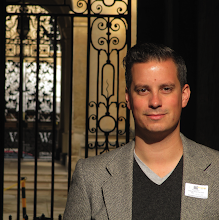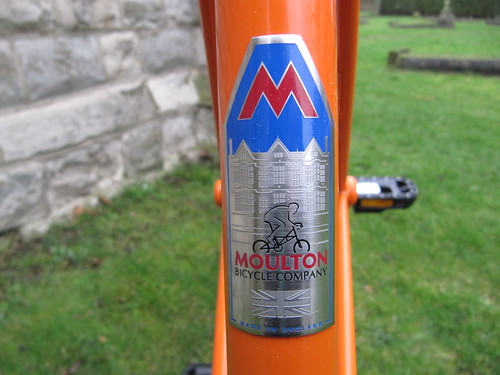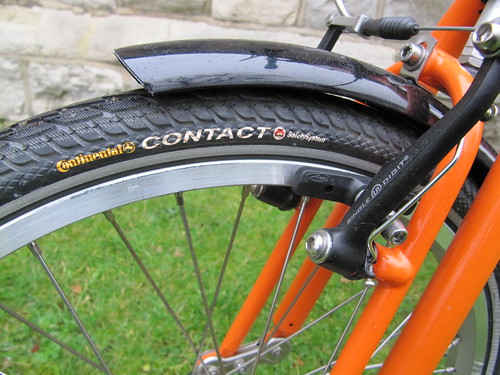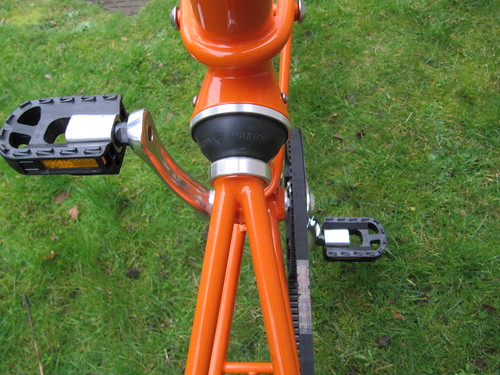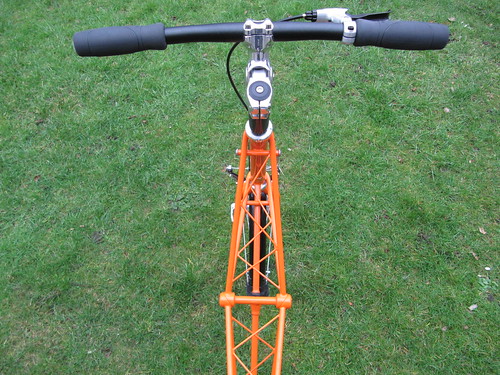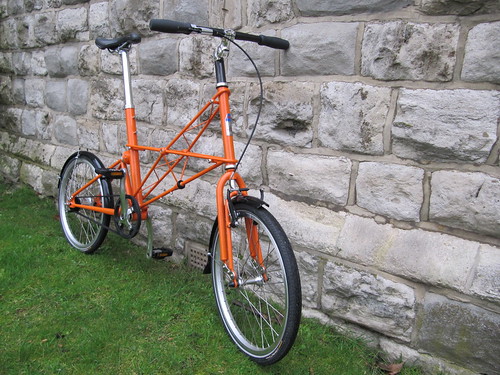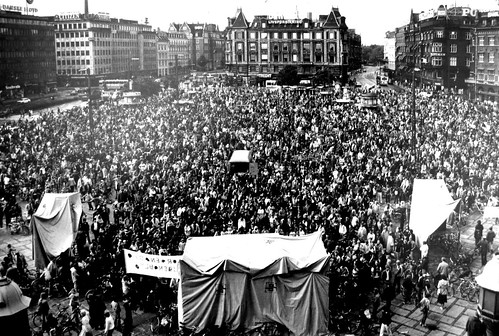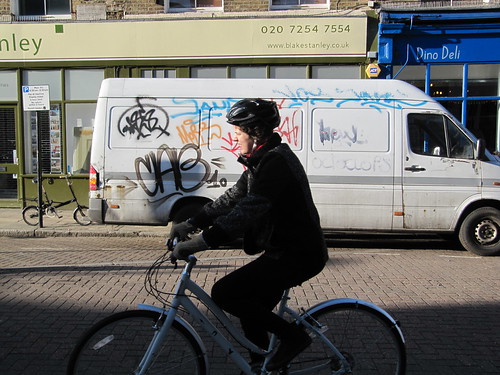There’s been lots of discussion online recently about the best approach towards growing cycling for the future. Opinions have varied hugely; some believe we have to do all we can to protect existing cyclists’ rights and to look after those who currently choose to get out there by bike. Others have stressed the importance of the potential market for cycling and how we must bring about conditions which will make cycling possible for everyone, instead of hoping that anyone taking to two wheels will simply endure the current status quo. Some are focussed on commuter cyclists whilst others want more everyday widespread ridership. Some are worried about potholes, some about child safety, some fear that their local velodrome is falling apart while others still are looking for the right conditions for a long distance cycle tour.
In recent online debates about the establishment of the Cycling Embassy of Great Britain, there’s been somewhat of a “my way or the highway” undertone from both sides. Carlton Reid, on his bike blog Quickrelease.tv believes that cycling is at risk of splintering, of its message becoming diluted, garbled or even watered down by the creation of another voice for cycling. He believes that in order to succeed, ‘cyclists’ must all pull together in the same direction.
This is where I believe cycling campaigners are missing a trick here in the UK. As my opening paragraph shows, cyclists are a diverse bunch with disparate interests, and rightly so. Some people I know who cycle do so because they believe they are helping to transition to an oil-free society. Others who I know couldn’t give two hoots about traffic reduction if it would impede on their ability to drive, and likewise there are plenty of cyclists I know who care less about their right to ride on all roads and more about creating conditions which they believe would allow their children to cycle safely from one side of town to the other. To expect all of us to work together to the same detailed aims and in the same direction is futile; no one campaign group or aim is going to please everyone on two wheels and risks alienation and inertia by attempting to do so.
If you will indulge me, I’d like to take you on a little social history lesson. Bear with me, as I am certain that similarities and lessons to be learnt will soon become apparent.
Being gay in 1960s Britain was not a particularly comfortable or attractive experience; it was not till 1967 that being gay was even decriminalised. General social attitudes were hostile, gay people were perceived as an odd minority, and if you had any kind of need of recourse to the law you were not guaranteed an even-handed experience, or even for the law to see your side of the story at all. There were, of course, just as many gay and lesbian men and women in the ‘60s as there are today, but many stayed ‘in the closet’ choosing to marry and act out straight lives because the alternative was so wholly unappealing, not to mention terrifying. Amongst gay people themselves there were those who advocated for a quieter, inconspicuous existence for fear that pushing too hard or rocking the boat might lead to harsher enforcement of anti-gay laws and a reduction in any hard won tolerances, no matter how minor those tolerances might be.
Starting to sound familiar at all?
Things came to a head in New York, where America’s gays and lesbians lead an equally unpleasant existence, in June 1969. Any gay bars or nightclubs were strictly illegal and very underground. One such bar was the Stonewall Inn. After a series of Police raids, public ‘outings’ and a general atmosphere of oppression, the gays fought back. An ill-conceived and poorly managed raid on the bar on the night of June 28th rapidly turned into a riot. Gay men and women, drag queens and transvestites took to the streets claiming ‘enough is enough’. People poured out of adjoining bars and the riot turned in to an all-out pitched battle between gay people and the Police; as news spread around the bars and street network of New York more and more people came out to join the protestors, and riots raged for several nights. For the first time in Western history gay people stood up for their rights, and literally fought for them.
The Stonewall Riots in New York lasted several nights.
Now, I’m not advocating that cyclists start a riot anytime soon - I’m not convinced that it would help our cause - but the Stonewall Riot was a ‘touch stone’ event, and what happened next is what is really interesting.
Even before the advent of the internet age, good ideas spread fast. Within six months two gay right advocacy groups had formed in the United States of America and the first ever ‘Gay Pride’ marches took place exactly one year later in Los Angeles, Chicago and New York. A gay rally was held in London in June 1970, and the first Pride March in 1972. Sydney’s Mardi Gras followed in 1978. Fast-forward to today; in 2010 an estimated one million people took to the streets of London to celebrate Pride, and Mardi Gras is worth an estimated 30 million dollars to the Australian economy. In the UK nearly all legislative hurdles to LGBT equality have now been overcome. It is arguable that this would not have been possible without the Pride movement.
The first gay pride march in London
Just as in cycling, there is a broad diversity of gay people with widely differing needs. Some gay people were concerned that they were serving in the military illegally, and lobbied to change the law on that front. Others had concerns about immigration rules which discriminated against multi-national gay couples, whilst others still had worries about hospital visiting rights, wills and probate, adoption and family rights or civil partnerships. The list of hurdles that have been overcome is substantial; with successes such as adoption or immigration rights the success has only affected a small minority of gay people. If each of these ‘minorities within a minority’ had lobbied the Government alone they’d have struggled much longer in order to achieve their goals. However, by participating in Pride they could approach the law makers by demonstrating they were part of a much larger and more powerful voting block. This has been the legacy of Pride; legislative changes which affect a small amount of people but which are important none the less have been secured with the back-up of a million people in the street. Those who wanted adoption rights marched in support of those who wanted to serve openly in the military and vice versa. Solidarity won the day.
As I’ve mentioned, cycling is already represented by a number of different campaigning groups with different aims. Some people want to build more bike lanes; some people want to increase the budget for cycle training. Some of us want to see money spent on developing sports cycling; others still want to improve the lot of cycling commuters. Since the abolition of Cycling England our campaigns must each negotiate with the Government one by one. Separately they have a few thousand members here, or a few thousand members there. No one campaign group is big or powerful enough to be able to go Parliament with a consensus for cyclists. Meanwhile, our Government is busy dismantling Cycling England, dicking around with the Cycle To Work scheme, giving drivers cash for scrap cars and offering huge subsidies on electric motor. In the Courts the judiciary is still letting dangerous drivers get away with murder and our city planners are certainly not ‘thinking bike’ as they design a massively expanded M25.
Whilst we all want different things for cycling, and our diversity is a strong point, when it comes to having our voices heard it is also our Achilles’ heel. It is too easy for our Government to fend off all the minority voices within cycling by getting them to fight for scraps (like the recently established Sustainable Travel Fund). Despite our diversity, however, there is one thing we all agree on and that is that the Government should ‘Put Cycling First’ in all that it does. It’s great that we have different cycling campaigns for different types of cyclists, but perhaps they could learn something from the Gay Pride movement and once a year have all types of cyclists come together to show strength in numbers and solidarity in their similarities. None of our cycling campaigns ought to claim to be the primary voice of cyclists, and neither should they dismiss those which don’t agree with their own ideals. However, I can’t help but feel that British Cycling, or the CTC or even the Cycling Embassy of Great Britain could get the Government to sit up and take notice an awful lot more if they represented not their few thousand individual members but could say they were speaking as part of the million cyclists who had recently taken to the streets...
Maybe it’s time we had a Bike Pride ride of our own? (But please, no Kylie Minogue...)
